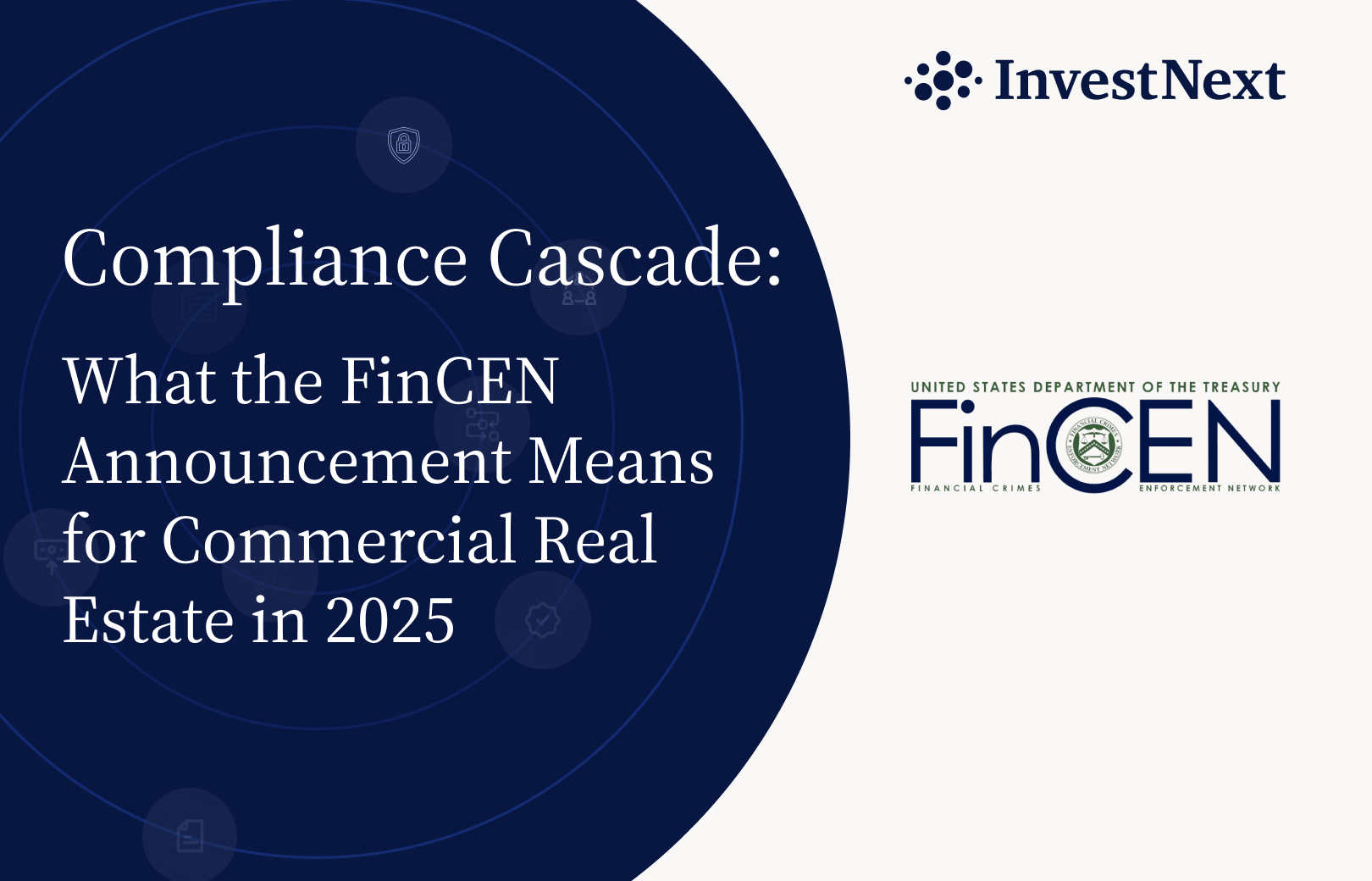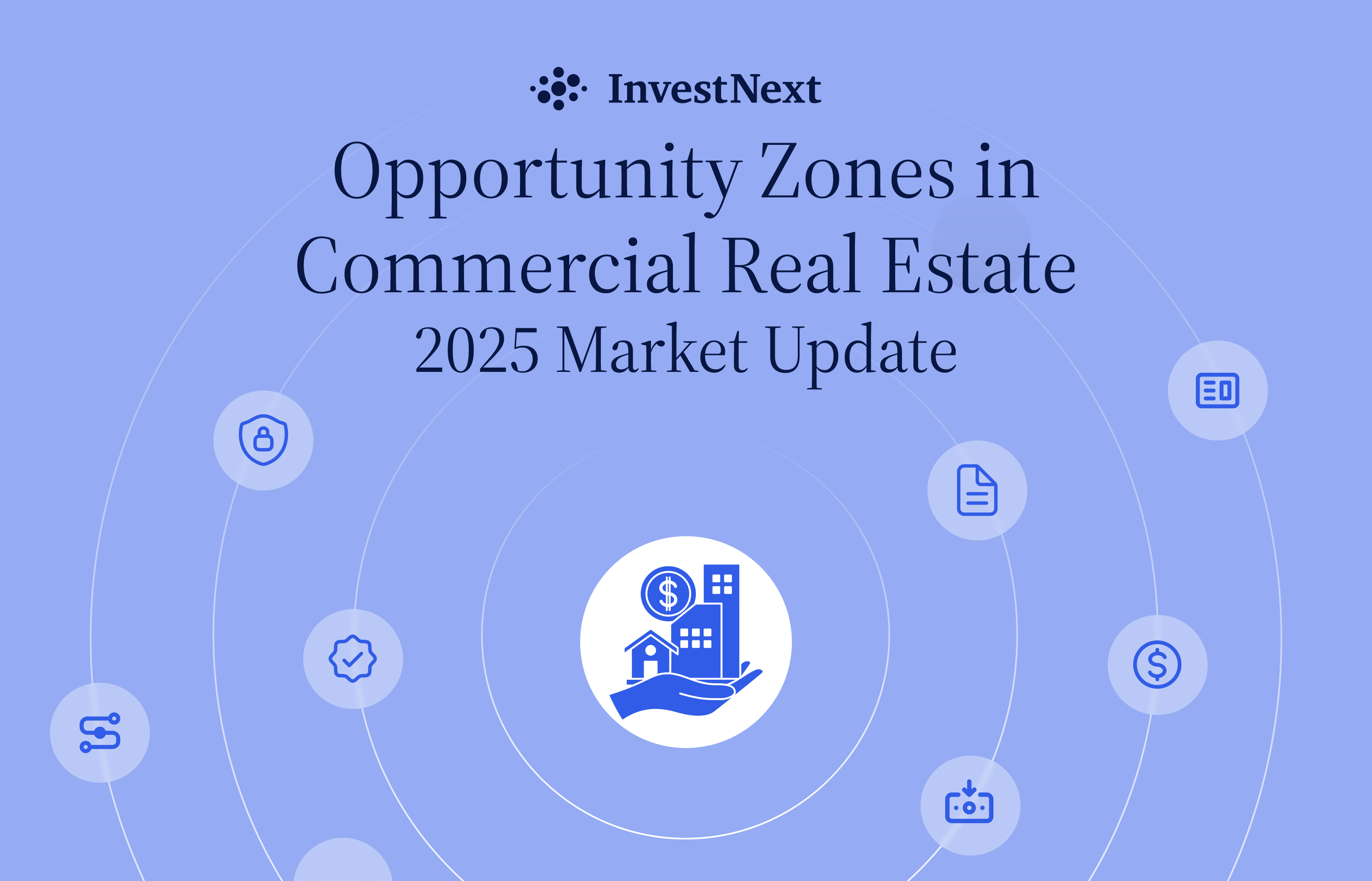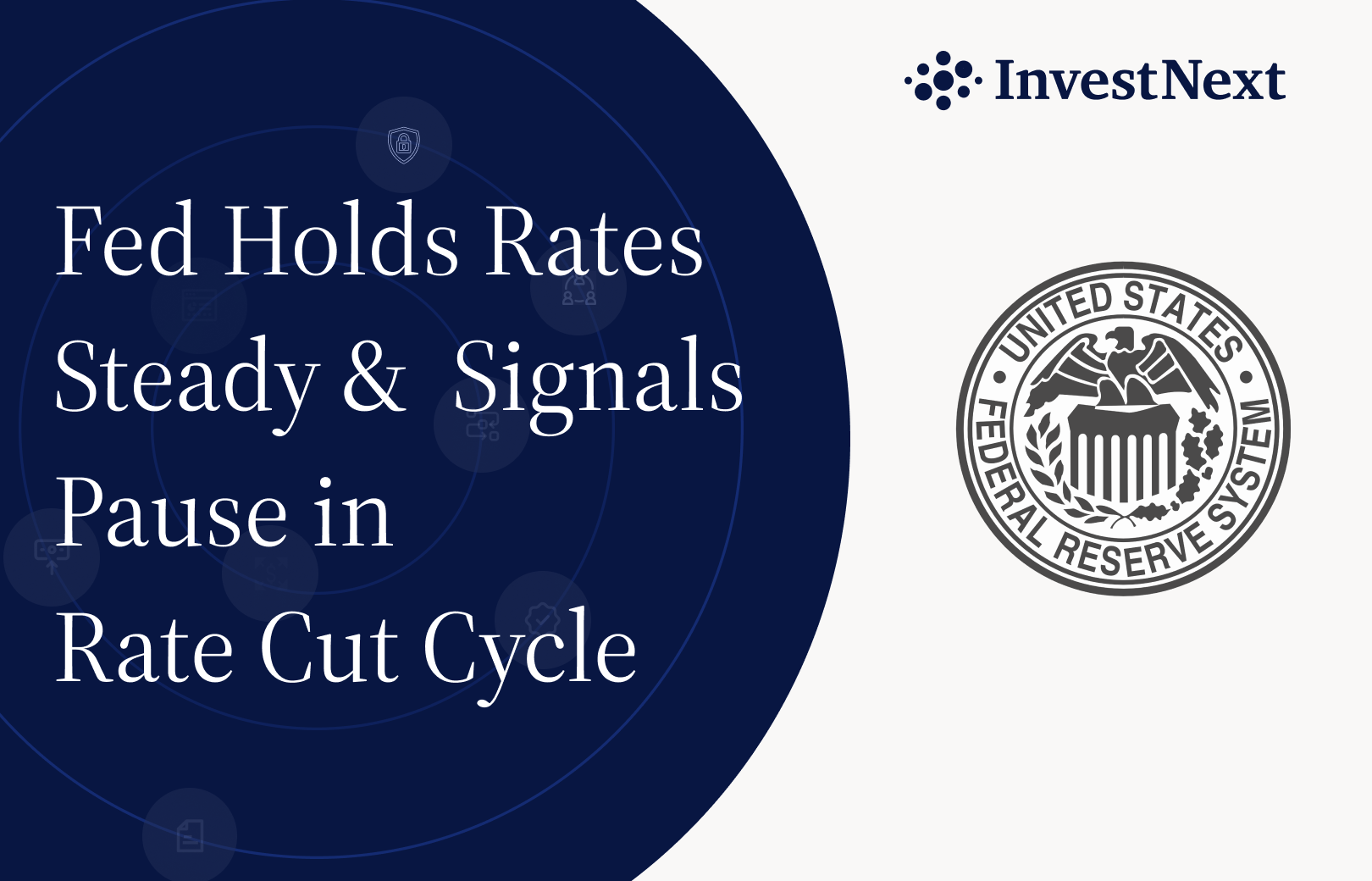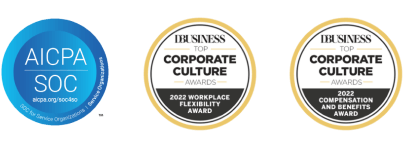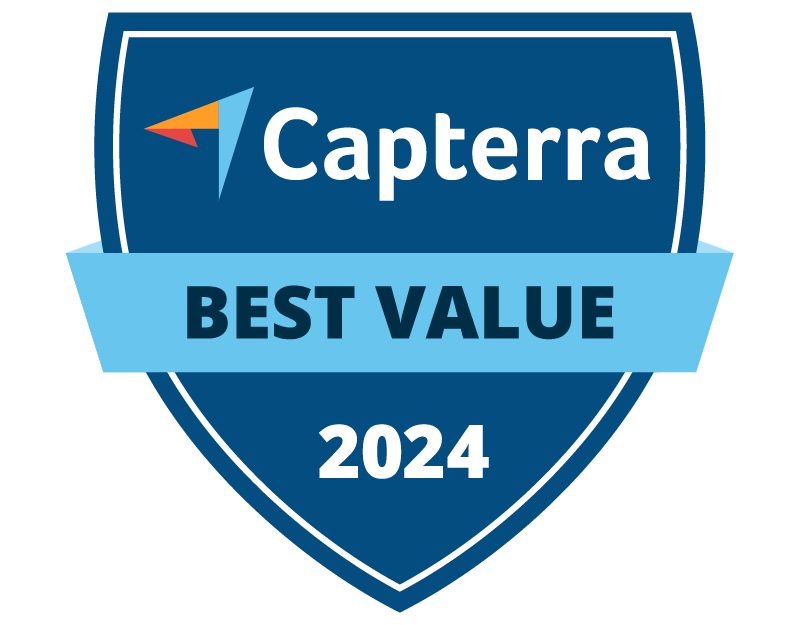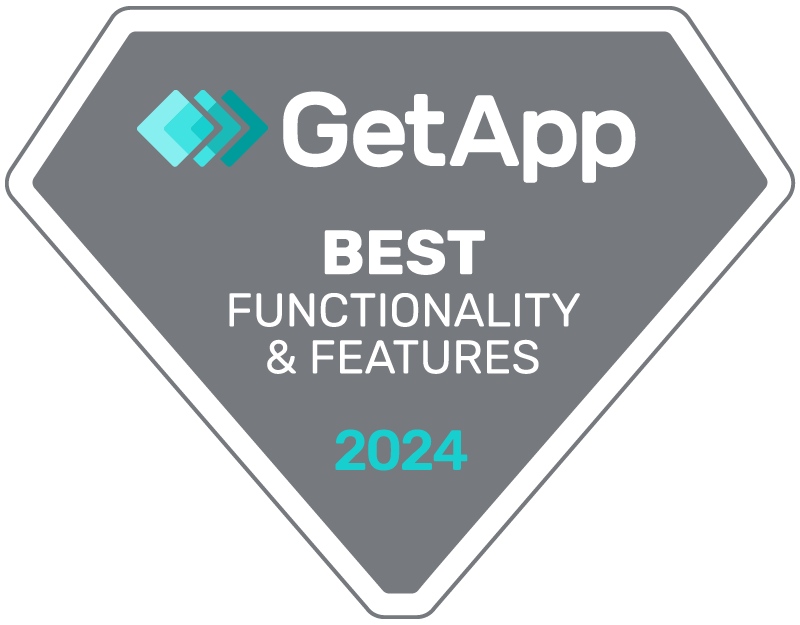The real estate investment landscape faces its most significant regulatory shift in over a decade. FinCEN’s new compliance requirements will fundamentally change how firms handle transactions, verify investors, and manage reporting from 2025 onward.
With over $4.6 billion lost to fraudulent investments in 2023 alone, these enhanced anti-money laundering protocols arrive at a critical time for the industry.
For real estate investment firms, this isn’t just another regulatory update – it represents a fundamental shift in compliance obligations. From stricter due diligence standards to expanded beneficial ownership reporting, firms must rethink their entire approach to transaction management and investor verification.
Our comprehensive guide examines the core changes in AML/CFT regulations, their practical impact on your operations, and the strategic steps needed to not just meet these new requirements but turn them into a competitive advantage.
Understanding KYC/AML vs AML/CFT
While you may be familiar with KYC/AML (Know Your Customer/Anti-Money Laundering) solutions, FinCEN’s regulations specifically reference AML/CFT (Anti-Money Laundering/Countering the Financing of Terrorism) requirements.
Though these terms overlap significantly in practice, it’s important to understand the distinction: KYC/AML focuses primarily on verifying investor identity and monitoring for suspicious activity, while AML/CFT encompasses broader measures to prevent both money laundering and terrorism financing. While InvestNext’s KYC/AML solutions provide many of the verification and monitoring capabilities needed for AML/CFT compliance, firms should understand that FinCEN’s requirements may necessitate additional protocols beyond standard KYC practices.
Overview of FinCEN’s New Regulations
The new regulatory framework requires real estate professionals to adapt to major changes in residential transaction monitoring and reporting. FinCEN’s complete rule creates a shift in compliance obligations that aims to boost transparency and prevent money laundering across the U.S. residential real estate sector.
Key changes in real estate compliance
The reporting requirements now apply to non-financed transfers of residential real estate to legal entities or trusts 1. These fundamental changes deserve your attention:
- Settlement agents, title insurance agents, and attorneys face improved reporting obligations
- A “reasonable reliance” standard applies to report required information
- Transaction thresholds no longer have minimums
- Reports must be filed even for zero-consideration transfers
Timeline for implementation
FinCEN’s final rule takes effect December 1, 2025, which allows about a year to prepare operations. The rule’s scope is significant—more than 172,000 reporting persons must comply and submit over 800,000 Real Estate Reports each year 2. To handle this enhanced reporting workload, firms nationwide are preparing to train approximately more than 640,000 staff members annually to effectively meet these requirements 2.
Scope of affected entities
These reporting requirements specifically cover:
| Property Types | Transaction Characteristics |
| Single-family houses | Non-financed transfers |
| Townhouses | Transfers to legal entities |
| Condominiums | Transfers to trusts |
| One-to-four family buildings | Vacant land for residential development |
The rule features a “cascade” system that helps determine reporting responsibilities and allows professionals to designate compliance duties flexibly 1. You don’t need a separate anti-money laundering (AML) program, but you must follow the reporting requirements 3.
The scope excludes transactions if you have personal dealings and offers 16 exemptions that cover highly regulated entities . These exemptions apply to all but one of these groups: securities reporting issuers, governmental authorities, and financial institutions that already have AML obligations.
Impact on Real Estate Transactions
FinCEN’s new regulations will most likely have a tangible impact your real estate transaction processes. These most important changes are the foundations of curbing illegal finance in the residential sector. Your property transfer handling and compliance record maintenance will need detailed updates accordingly.
Boosted due diligence requirements
The new rule sets verification standards that apply to your real estate transactions. You can now use a “reasonable reliance” standard to collect and report information 5. This means you can trust information from other parties unless you know something that questions its reliability.
Your due diligence requirements now include:
- Verifying identities and addresses without government documentation
- Maintaining certification records that show beneficial ownership information
- Keeping documentation for five years 5
Reporting obligations for beneficial ownership
Your reporting requirements now include detailed beneficial ownership information about legal entities and trusts. Beneficial owners are those who exercise “substantial control” or own/control at least 25% of the transferee entity’s ownership interests .
| Required Information | Timeline |
| Legal entity details | At closing |
| Beneficial owner data | Within 30 days |
| Payment information | End of following month |
Changes in transaction processes
The transaction workflow needs adjustments to meet new reporting timelines and documentation requirements. You can file reports within 30 calendar days after closing or until the last day of the month following the closing month . This flexibility will give you enough time to collect and verify the required information.
Reportable transactions have expanded substantially. The reporting requirements now cover non-financed transfers of residential properties that include:
- Single-family homes, townhouses, and condominiums 6
- Properties intended for one-to-four family occupancy 7
- Transfers with no consideration, such as gifts 1
These updates impact more than 172,000 reporting persons who will file over 800,000 Real Estate Reports each year 5. Your compliance strategy should evolve to handle this higher reporting volume while you retain control over accuracy and timeliness.
Challenges and Opportunities for Real Estate Professionals
The evolving real estate compliance landscape brings both challenges and strategic opportunities while you become skilled at new regulatory requirements. Your business can benefit from the industry’s move toward greater transparency and technological integration that changes how you handle compliance obligations.
Adapting to new compliance standards
Organizations need to evolve their compliance strategy to manage FinCEN’s increased reporting volume. FinCEN expects over 800,000 Real Estate Reports annually from more than 172,000 reporting persons 5. This change requires annual training for more than 640,000 personnel 2 and represents one of the most important operational adjustments.
Potential benefits of increased transparency
Your business can discover new opportunities through transparency:
- Build client’s trust with open communication about commissions and transaction details
- Simplified negotiation processes with clear terms and conditions
- Better transactions with immediate offer tracking
- Strong competitive edge in the market
- Lower risk of regulatory violations
Recent data shows that 70% of agents get questions from clients about transaction transparency . This trend shows growing market awareness and the need for clear, ethical practices.
Technology solutions for compliance management
With FinCEN’s expanded reporting requirements approaching, real estate investment firms must evolve beyond manual compliance processes. The surge in fraudulent investments – over $4.6 billion lost in 2023 alone according to the FTC – highlights why modern compliance solutions are no longer optional. As firms prepare for 2025’s regulatory changes, technology will be the key differentiator between those who thrive and those who struggle.
Building Institutional-Grade Compliance Infrastructure
Modern compliance technology must balance rigorous security standards with efficient investor experiences. InvestNext’s integrated KYC/AML solution directly addresses these demands through:
| Capability | Verification Process | Business Impact |
| Global Identity Verification | Support for 14,000+ ID types across 200+ countries | Expand investor reach while maintaining compliance |
| Watchlist Screening | Monitoring of 10,000+ databases worldwide | Proactive risk management across jurisdictions |
| Biometric Verification | Real-time liveness checks | Prevent fraud while maintaining efficiency |
| Entity Processing | Unified KYC/KYB verification | Support all investor types through one platform |
“Gathering accreditation documents manually took 2-3 weeks. I’m sure we lost investors because of the time it took. The faster they can go through, the better,” notes Casey Klauser, Marketing Manager at Cedar Creek Capital.
Integrated Verification Integration
The platform transforms complex compliance requirements into straightforward workflows:
- Verification completion in under one minute
- Over 90% first-attempt approval rates for US-based investors
- Automated watchlist screening across global databases
- Continuous compliance monitoring
“Now, investors must complete their accreditation before they can fund any deals or proceed further,” explains Klauser, highlighting how automation ensures consistent compliance.
Preparing for 2025: Action Steps for Compliance
As the December 2025 deadline approaches, firms must systematically upgrade their compliance capabilities. This preparation involves both technological and operational changes to meet FinCEN’s enhanced requirements.
Updating Internal Policies and Procedures
The “reasonable reliance” standard introduced by FinCEN requires demonstrable due diligence processes. Modern compliance platforms support this through:
| Documentation Requirement | Technology Solution | Compliance Impact |
| Identity Verification | Automated KYC with biometric confirmation | Consistent, auditable verification |
| Entity Structure Validation | Integrated KYB processes | Comprehensive ownership tracking |
| Ongoing Monitoring | Continuous database screening | Real-time risk management |
Staff training and education
The new regulations will require extensive training efforts, with FinCEN estimating more than 640,000 team members will need training on new reporting requirements 2. Organizations must prepare by:
- Developing comprehensive training programs for verification procedures
- Establishing clear protocols for handling complex compliance scenarios
- Creating documentation standards for regulatory reporting
- Implementing ongoing education programs to stay current with evolving requirement
Building Resilient Compliance Programs
While the final rule doesn’t mandate a detailed anti-money laundering program 3, firms should implement robust compliance frameworks that can adapt to future requirements. A comprehensive compliance solution should include:
Risk Assessment Framework
- Automated investor screening against global watchlists
- Standardized risk evaluation processes
- Continuous compliance monitoring
Verification Infrastructure
| Feature | Compliance Impact |
| Rapid Processing | <1 minute verification with 90%+ first-attempt approval |
| Global Coverage | Support for 14,000+ ID types from 200+ countries |
| Comprehensive Screening | Integration with 10,000+ global databases |
| Documentation | Automated audit trails and record retention |
As FinCEN continues to release additional guidance 11, firms must ensure their compliance infrastructure can adapt quickly to new requirements while maintaining operational efficiency.
Conclusion
FinCEN’s extensive changes to real estate compliance represent a radical alteration in property transaction handling and its coverage requirements. These new regulations affect more than 172,000 reporting persons. They just need boosted due diligence, beneficial ownership reporting, and detailed documentation standards. Real estate professionals must adapt to substantial operational changes. They need to implement new verification processes and manage higher reporting volumes while meeting the December 2025 deadline.
These new requirements need careful preparation through policy updates, staff training, and technology integration. Real estate professionals who start their compliance experience early will gain advantages in this evolving regulatory environment.
Book a demo today to learn more about our KYC/AML functionality and find how automated solutions can streamline your compliance processes. Companies that welcome these changes now will build stronger, more resilient operations ready for the boosted regulatory standards of 2025 and beyond.
FAQ
What are the key requirements of FinCEN’s new real estate rule?
Similar to the Corporate Transparency Act, the Residential Real Estate Rule requires entities involved in reportable residential real estate closings to report information to FinCEN about transfers and beneficial owners of transferee entities and trusts. This includes non-financed transfers of residential properties and applies even to zero-consideration transfers.
When do the new FinCEN reporting requirements take effect?
The final rule takes effect December 1, 2025. Organizations affected by these changes have approximately one year to prepare their compliance processes and technology infrastructure.
Who needs to comply with these new requirements?
More than 172,000 reporting entities must comply, including real estate investment firms, settlement agents, title insurance agents, and attorneys involved in residential real estate transactions. The rule affects those handling both traditional sales and non-financed transfers to legal entities or trusts.
What transactions must be reported under the new rule?
The reporting requirements cover:
- Non-financed transfers of residential properties
- Transfers to legal entities and trusts
- Zero-consideration transfers
- Single-family homes, townhouses, condominiums, and 1-4 family buildings
- Vacant land intended for residential development
